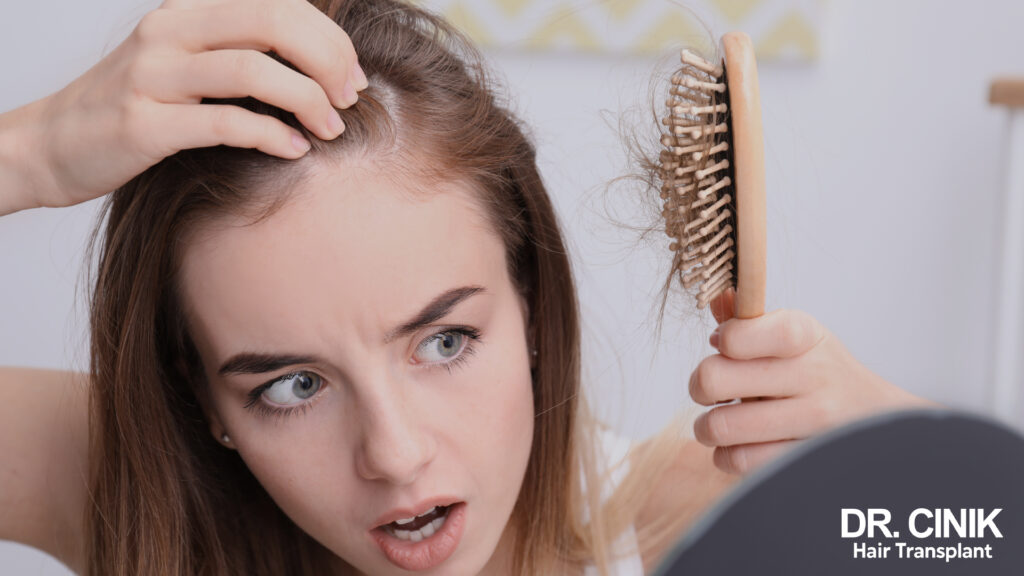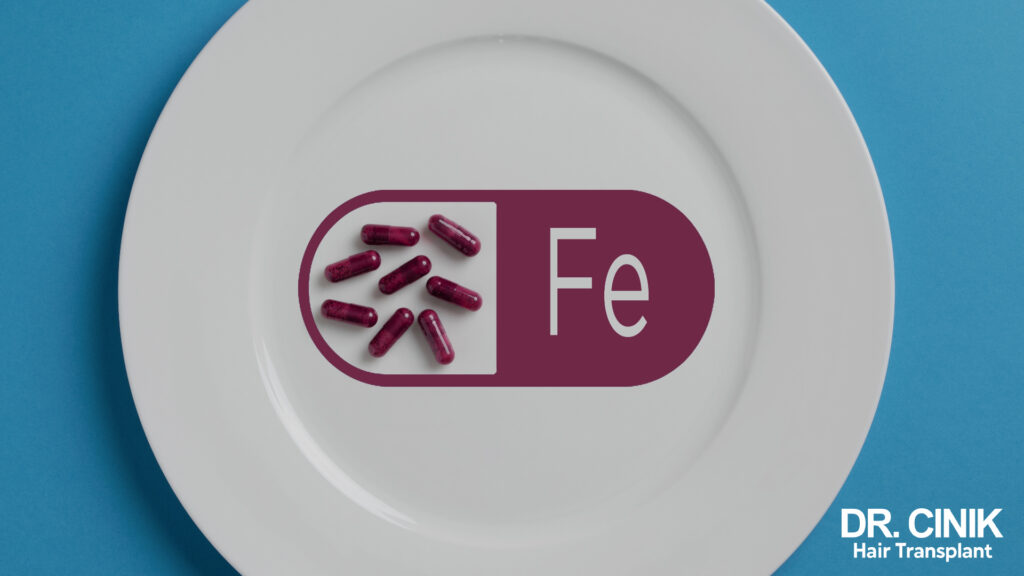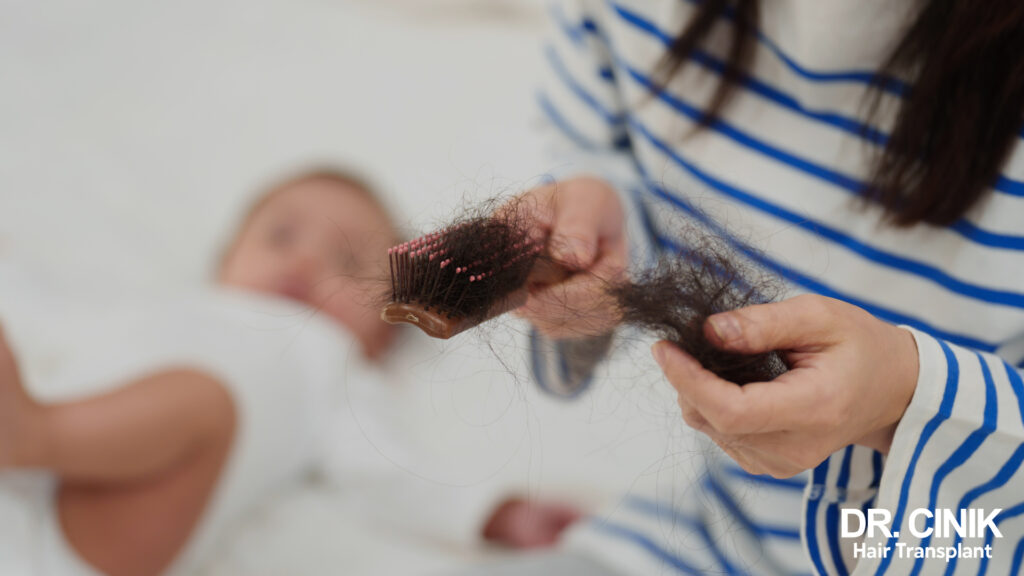Folliculitis
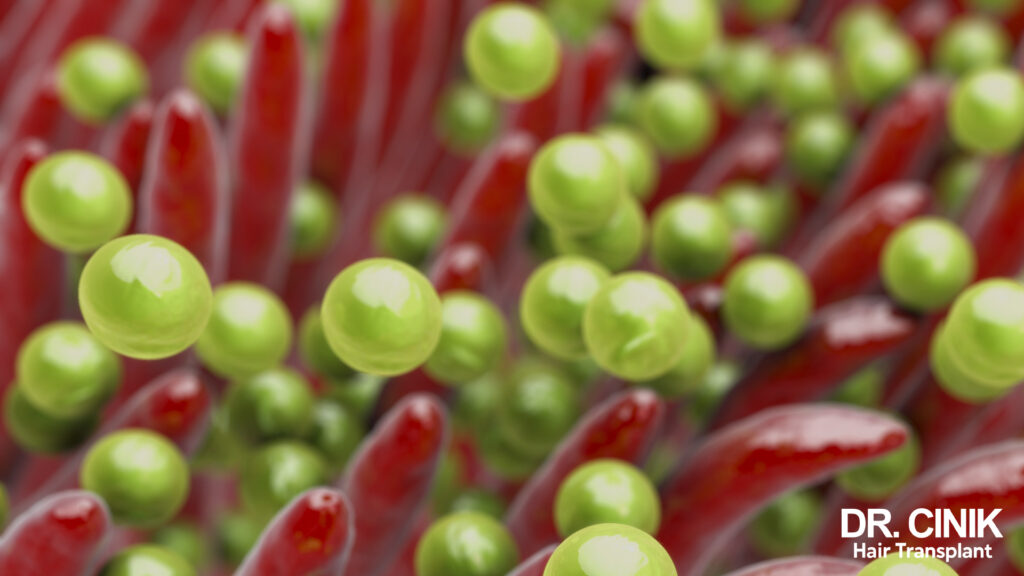
Summary
Folliculitis of the scalp, an inflammation of the hair follicles, can cause significant discomfort and potentially lead to hair loss if left untreated[1]. This condition often results from bacterial infections, particularly Staphylococcus aureus, or fungal infections. However, various environmental and physiological factors can also contribute to its development[1][2]. Common symptoms include pustules, redness, itching and a burning sensation[1]. Treatment options range from topical applications to advanced surgical procedures such as hair transplants, which Dr Cinik specialises in. This article comprehensively explores the causes, symptoms, diagnosis, available treatments and surgical solutions for folliculitis.
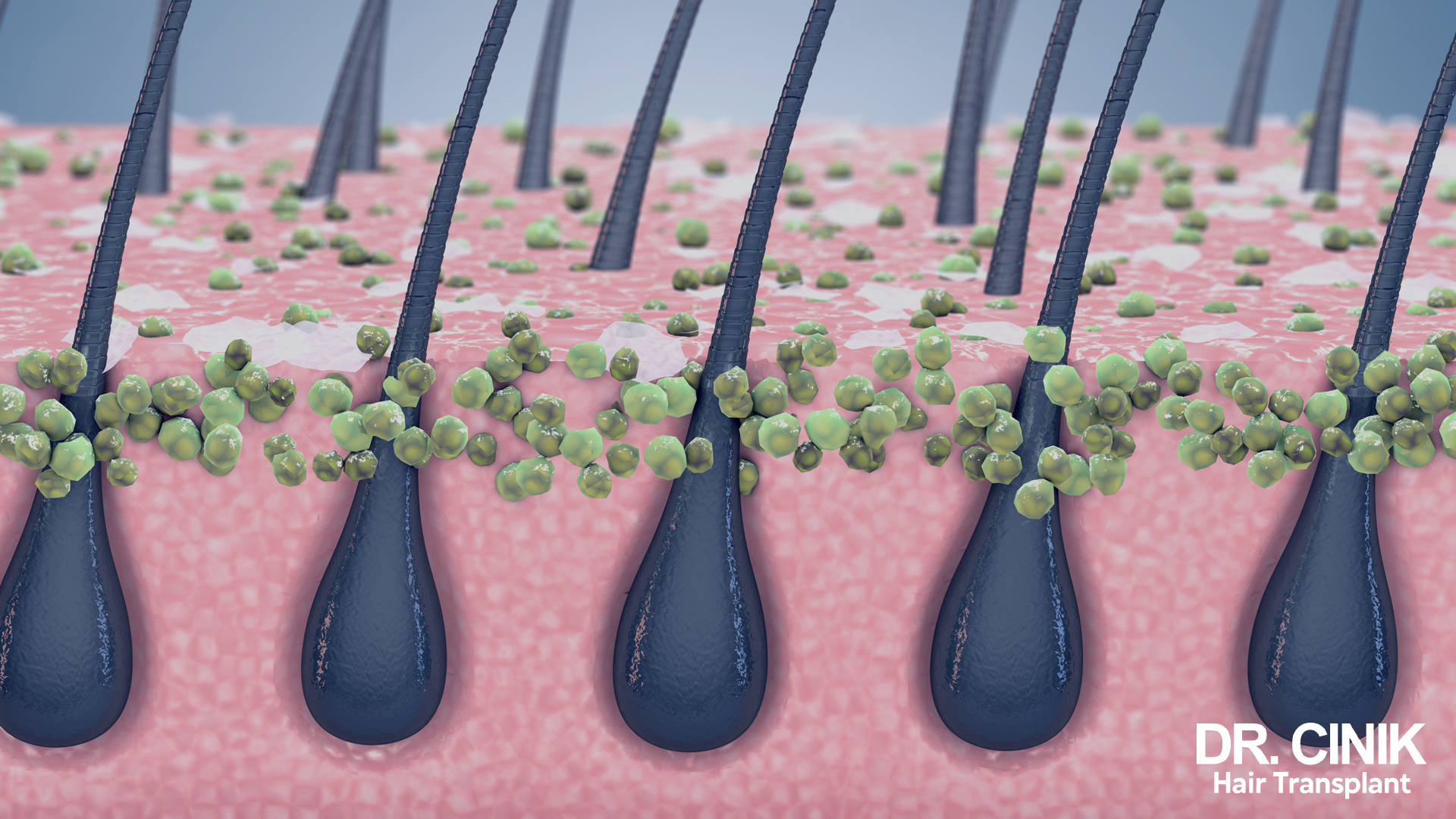
What is scalp folliculitis?
Folliculitis is an inflammatory condition affecting the hair follicles, the tiny pockets from which hair emerges. On the scalp, this inflammation can be:
- Superficial, affecting only the orifice of the follicle
- Deep, involving deeper skin structures[1]
While bacterial infections, particularly those caused by S. aureus, are the most common culprits, other pathogens, such as fungi, may also be involved[1][2].
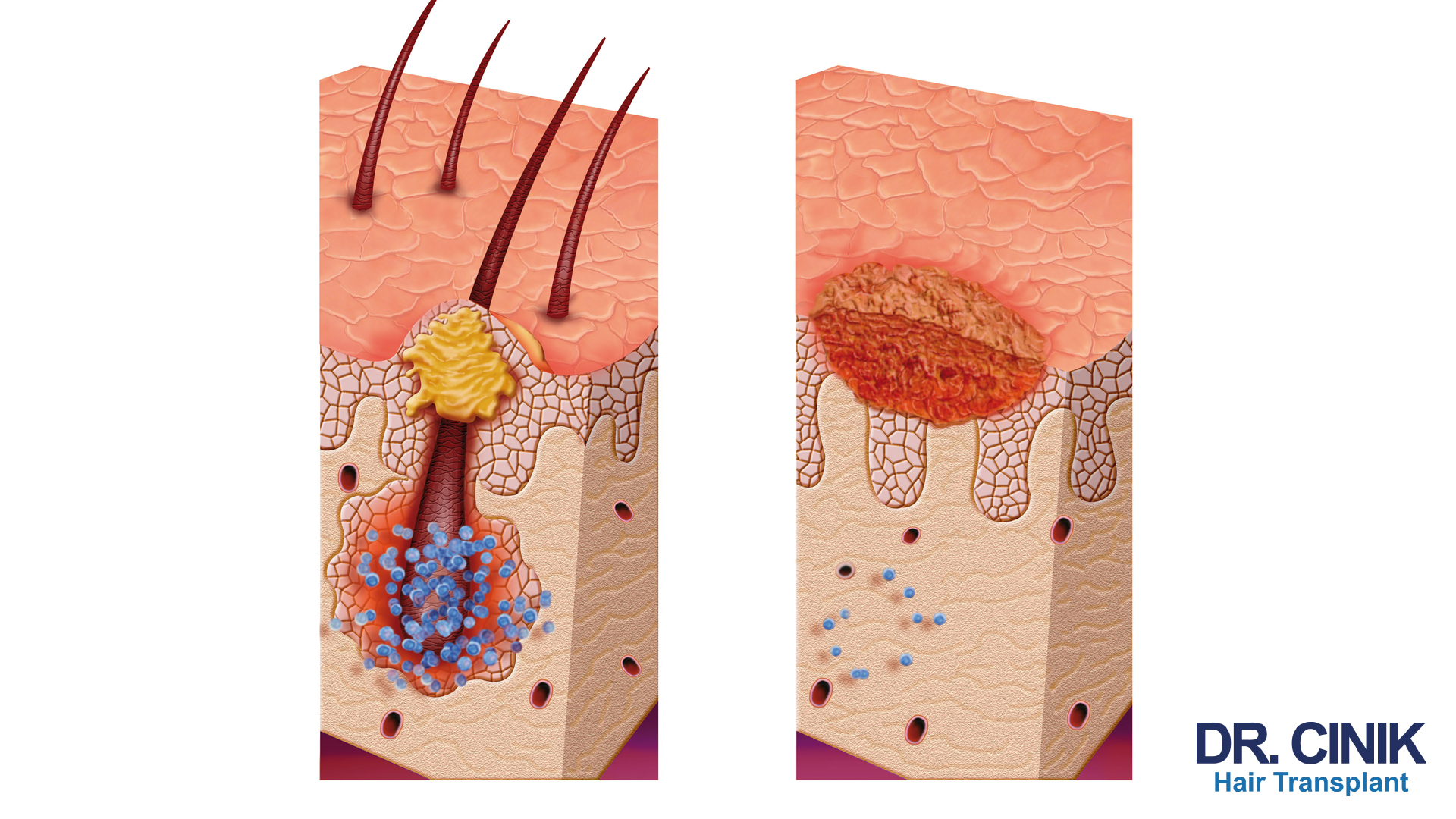
Several factors can trigger folliculitis:
- Poor scalp hygiene, which encourages bacterial proliferation
- Physical trauma (such as cuts or irritation from tight hairstyles) that creates entry points for pathogens[1]
- A compromised immune system that struggles to fight infections effectively[2]
- Hormonal changes that affect sebum production, creating an environment conducive to infection
Scalp folliculitis typically manifests with visible and varied symptoms, including painful pustules, redness, and itching[1]. If left untreated, the condition can become more severe, potentially leading to scarring and temporary hair loss. If the follicles are severely damaged, permanent hair loss may occur.
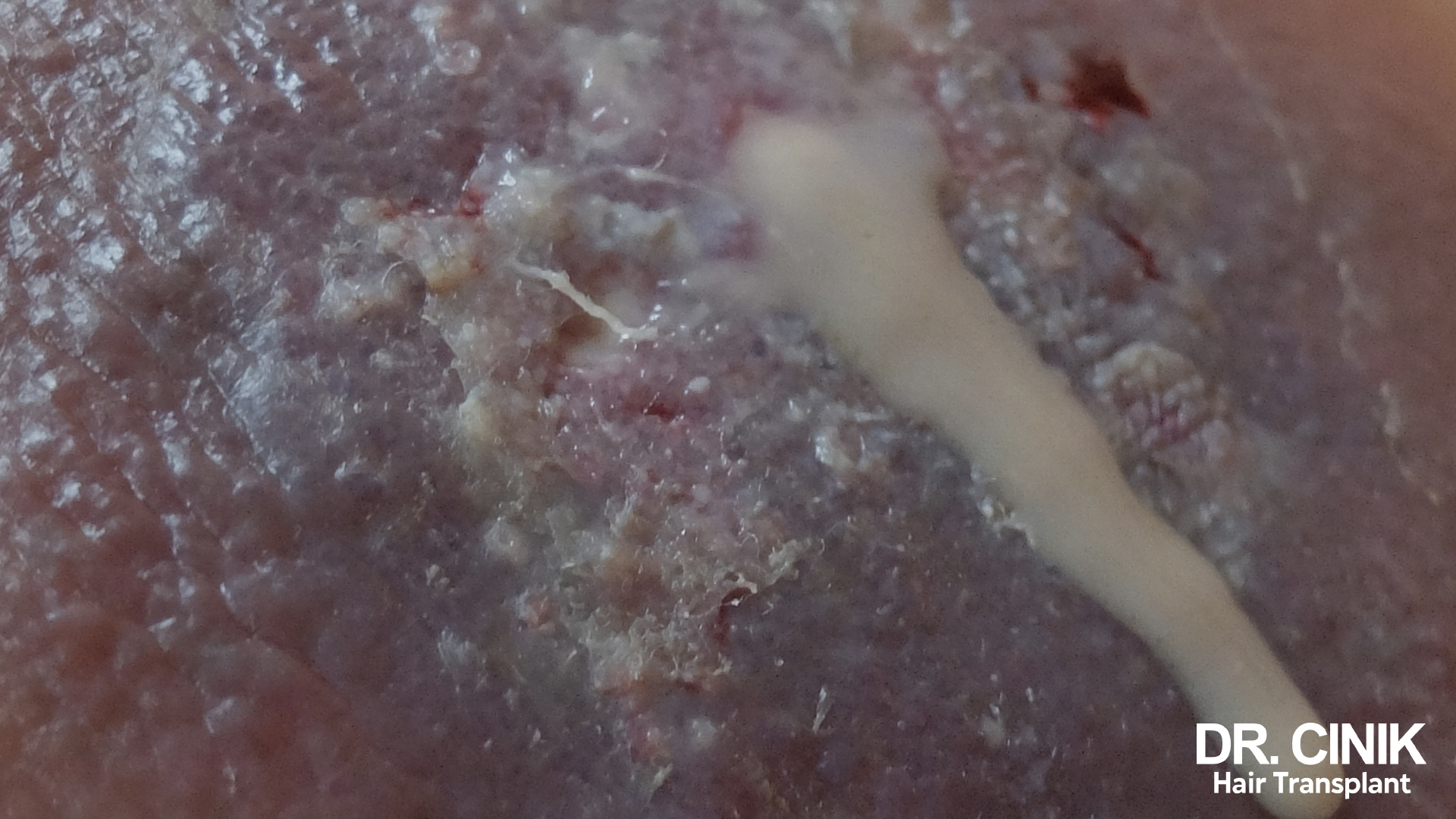
Diagnosis and progression
To diagnose scalp folliculitis, dermatologists perform a thorough clinical examination to identify signs of inflammation around the follicles[1]. Diagnostic tests, such as bacterial or fungal cultures, may be conducted to determine the causative organism[1]. This step is crucial for establishing an effective treatment plan, as different pathogens require specific therapeutic approaches.

Differential diagnosis is also essential to distinguish folliculitis from other dermatological conditions with similar symptoms, such as acne or dermatitis[2].
If left untreated, folliculitis can lead to serious complications:
- Infections may spread to other areas of the skin and beyond
- Scarring can occur, making the scalp less conducive to hair regrowth
- In severe cases, folliculitis can lead to scarring alopecia, where hair loss becomes irreversible[2]
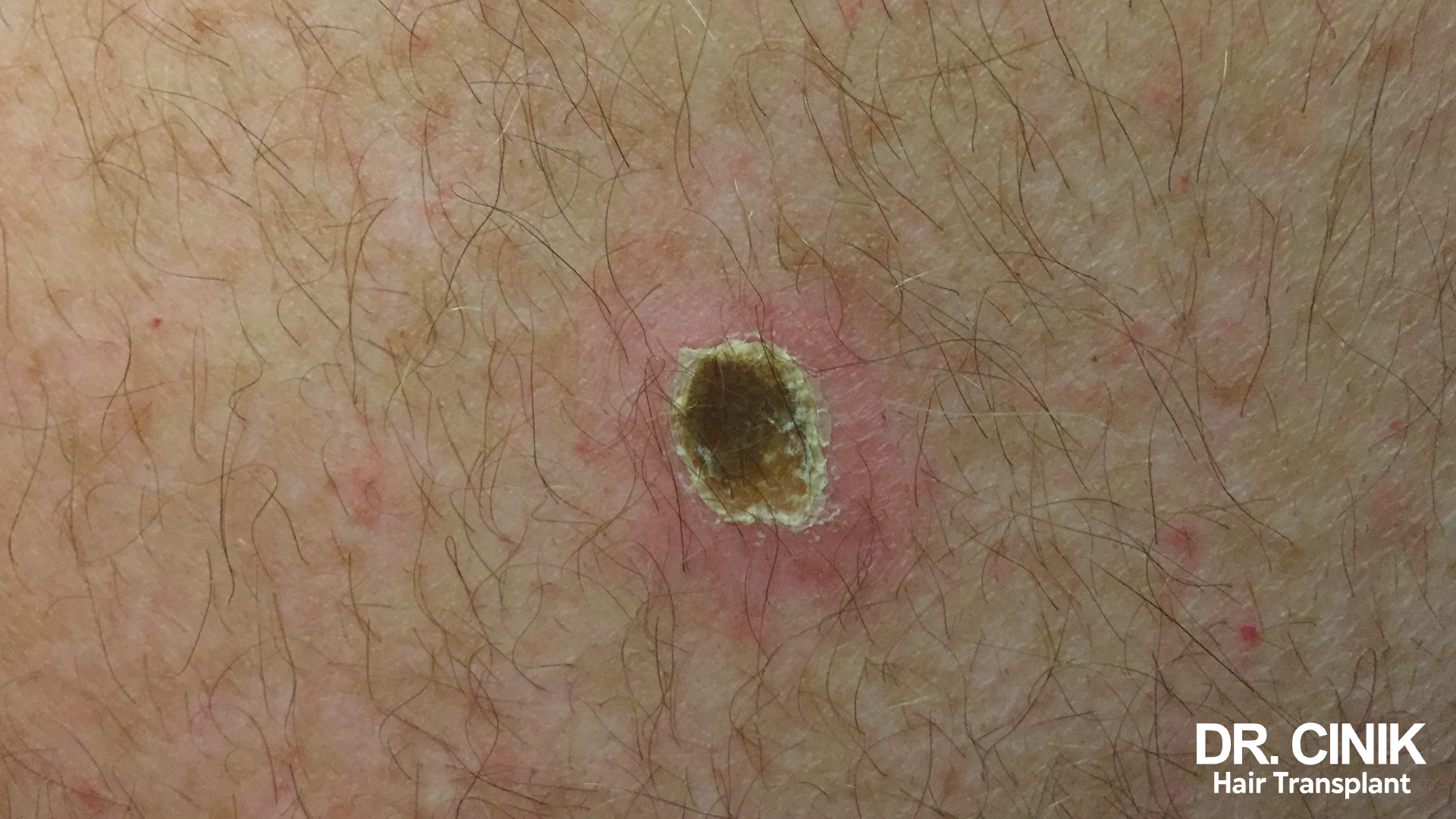
Conventional treatments
Treatment for scalp folliculitis varies according to the severity of the infection. For mild cases, topical antibiotics such as mupirocin or clindamycin are frequently prescribed[1]. These treatments act directly on the bacteria present on the scalp surface. In more severe cases or when the infection is deep-rooted, oral antibiotics such as doxycycline or cephalexin may be administered to treat the infection systemically[1].
If the folliculitis is caused by a fungus, topical or oral antifungals are preferred. Corticosteroids can reduce inflammation and pruritus, but their use must be carefully monitored to avoid exacerbating the infection[1].

In addition to pharmacological treatments, local care plays an essential role. Adopting a rigorous cleansing routine with antiseptic shampoos is advisable to avoid irritating or occlusive hair products and choose styling and washing techniques that do not stress the scalp[1].
Complementary approaches include natural treatments such as tea tree oil, known for its antimicrobial properties; zinc supplements, which have anti-inflammatory effects; and lifestyle changes to boost the immune system. Preventing recurrences requires constant attention to hygiene and overall scalp health[1][2].
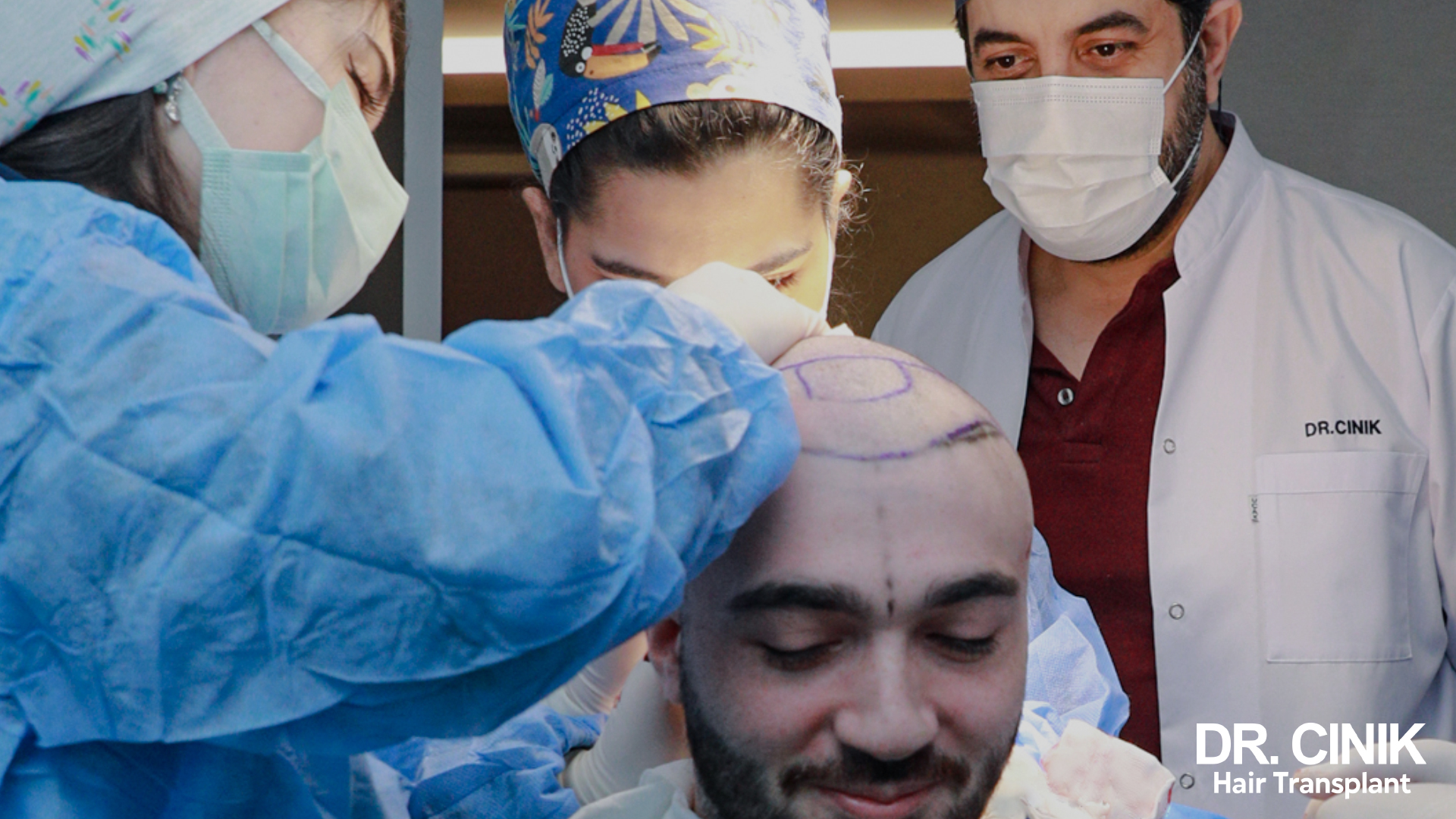
Post-folliculitis hair transplantation
Hair transplantation can be an effective solution for individuals who have experienced hair loss due to folliculitis. A thorough pre-operative assessment is crucial to ensure that the infection has healed, the scalp is suitable for grafts, and the patient is an appropriate candidate for the procedure.
Hair transplant techniques used include:
- FUE (Follicular Unit Extraction): Follicles are extracted individually from the donor area and implanted into the balding area, minimising scarring and damage to the scalp.
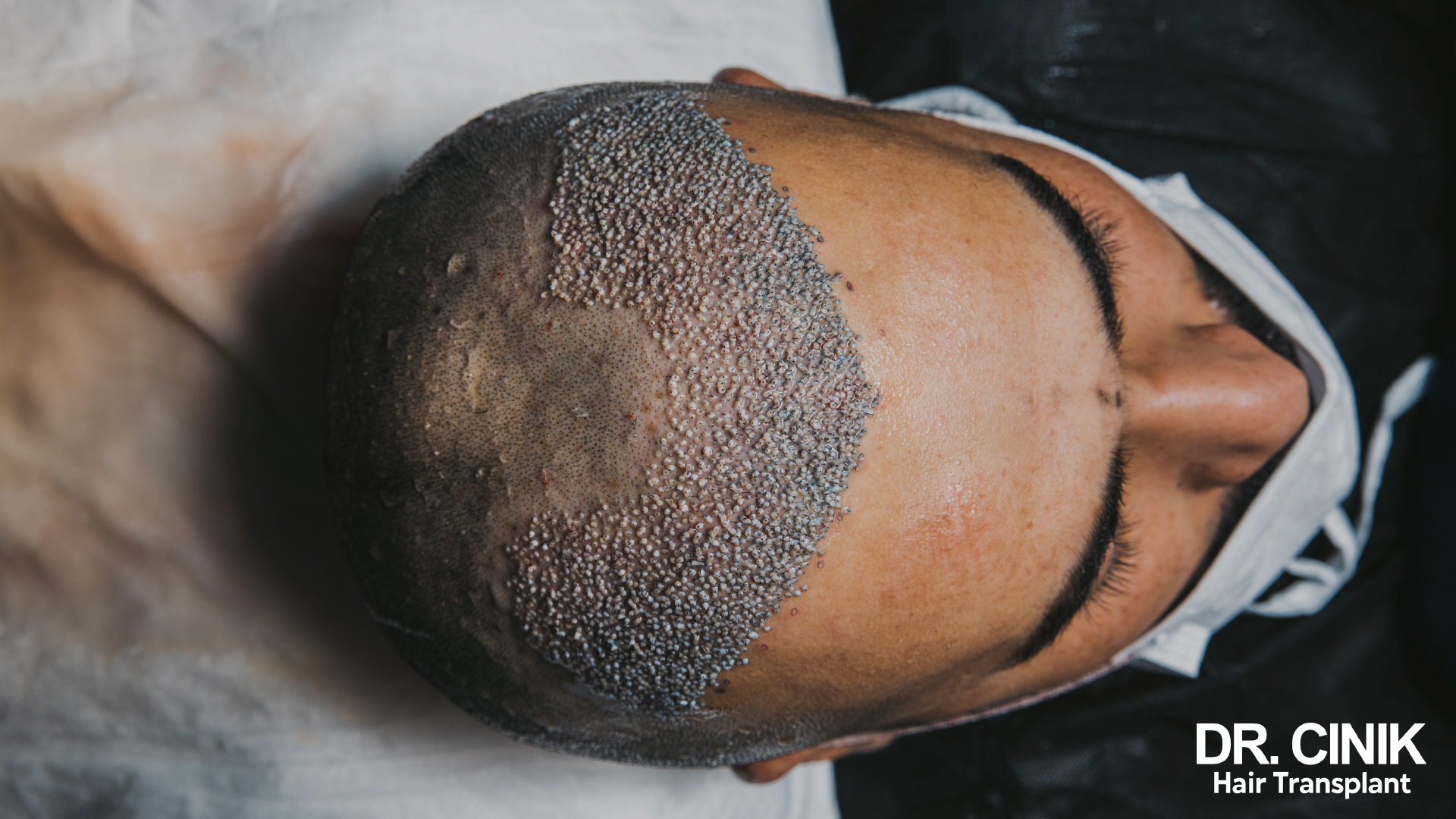
- DHI (Direct Hair Implantation): A more direct method where follicles are implanted without pre-incision, potentially reducing the risk of new infections.
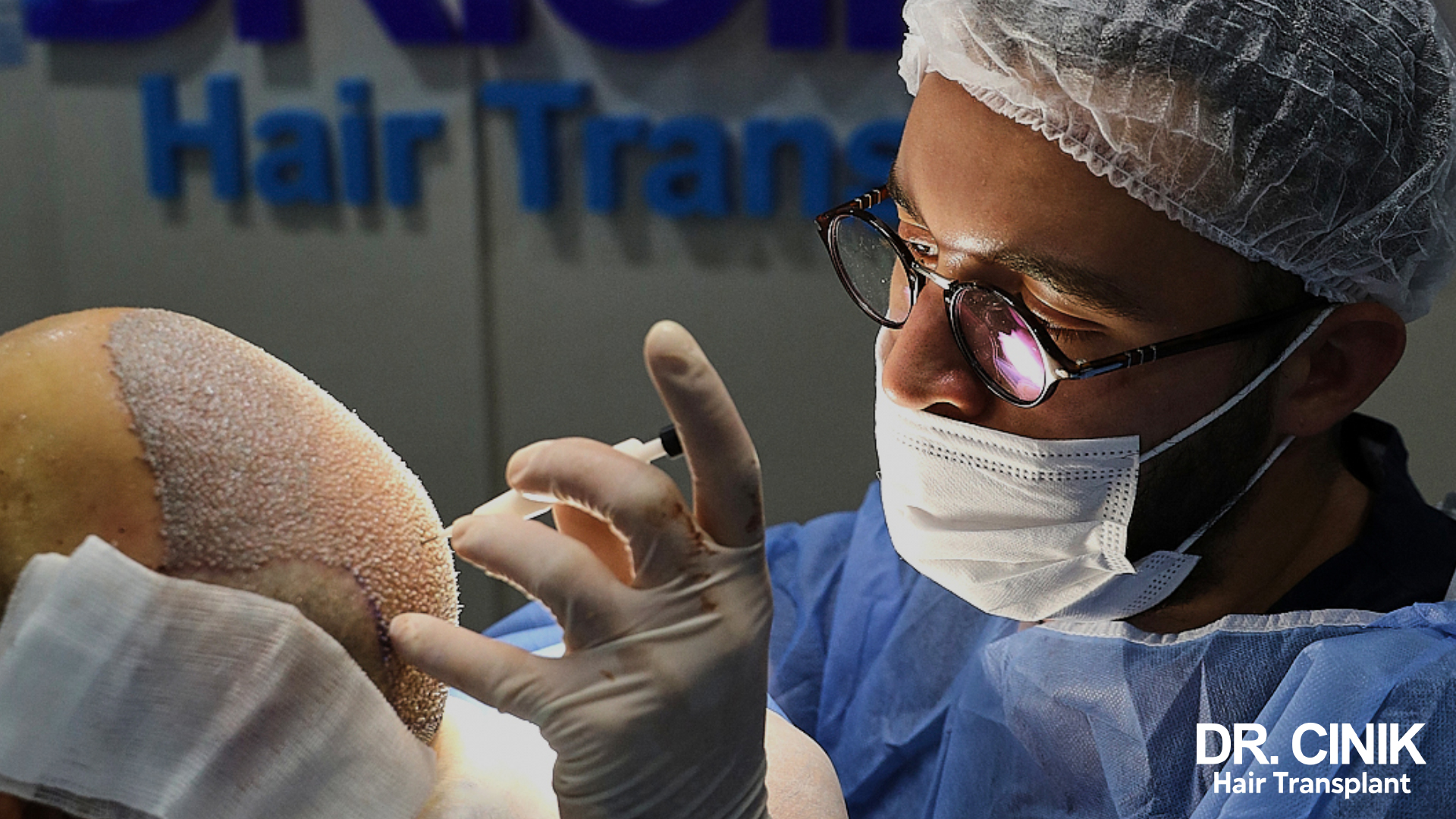
Post-operative precautions are essential: patients must maintain rigorous hygiene, avoid activities likely to irritate or infect the grafted areas, and scrupulously follow the surgeon’s recommendations regarding caring for their new hair. Long-term follow-up is necessary to assess the growth of the implanted hair and to intervene rapidly in the event of a recurrence of folliculitis.
Prevention and practical advice
Preventing scalp folliculitis is primarily based on maintaining impeccable hygiene. It is recommended to use mild shampoos that do not obstruct the follicles, avoid heavy cosmetic products, and reduce friction on the scalp[1]. It’s advisable to limit the use of hairstyles that pull excessively on the hair, choose hair accessories that are not too tight, and effectively manage stress, which can exacerbate skin problems[2].
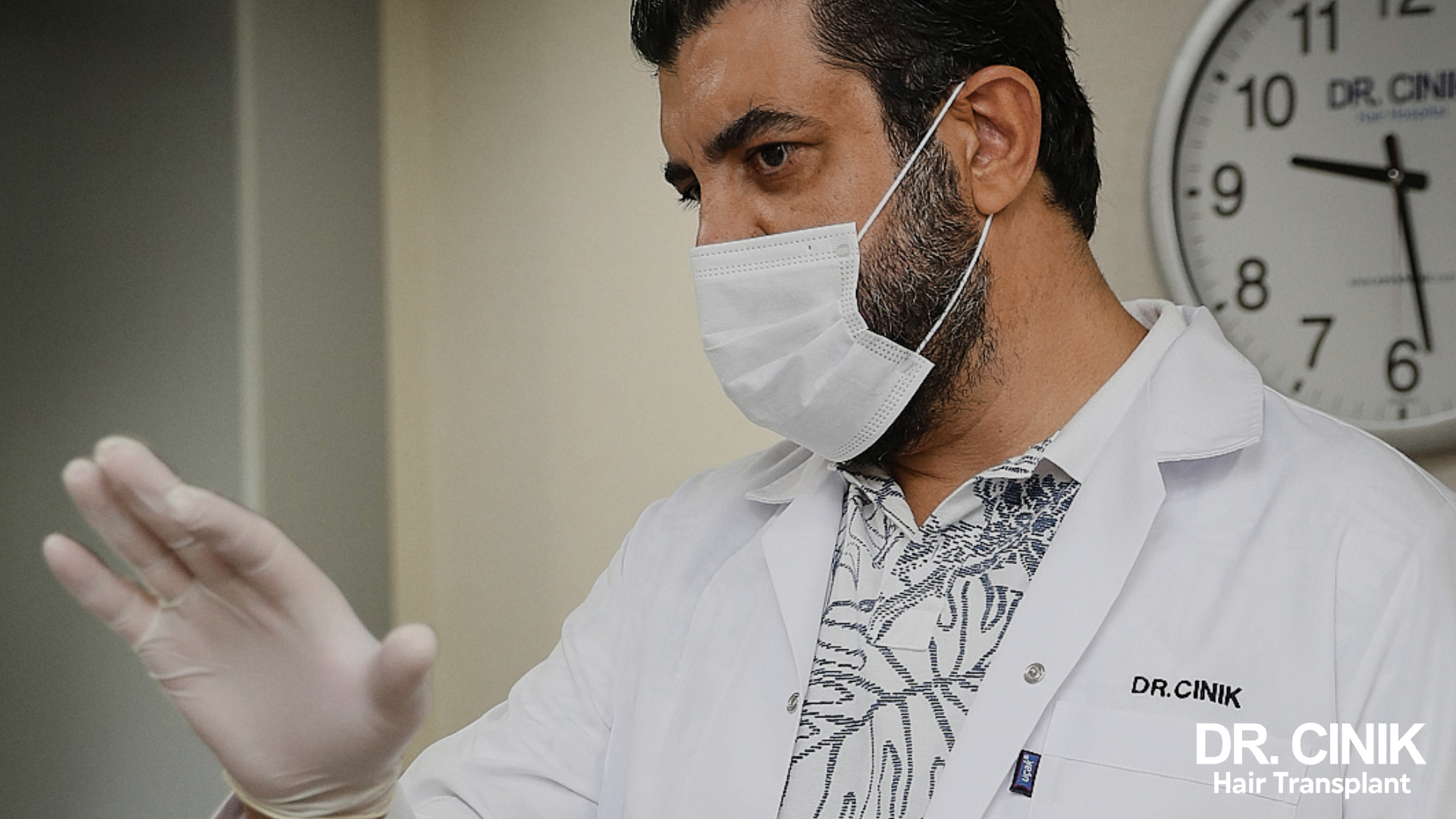
Regular scalp monitoring to detect early signs of folliculitis and prompt consultation with a specialist like Dr Cinik can prevent the condition from worsening and avoid irreversible hair loss.
Conclusion
Whilst scalp folliculitis presents a complex medical challenge, proper management combining rigorous care, meticulous hygiene and personalised treatments, which may include hair transplants, can effectively control this condition and restore confidence in one’s appearance[1][2]. Dr Cinik’s expertise in modern hair restoration techniques offers promising prospects for individuals affected by this problem, providing a path to healthier scalps and renewed self-assurance.
Sources
[1] Rehmus, W. E. (2023). Folliculite et abcès cutanés. MSD Manual. https://www.msdmanuals.com/fr/accueil/troubles-cutanés/infections-bactériennes-de-la-peau/folliculite-et-abcès-cutanés
[2] Sun, K. L., & Chang, J. M. (2017). Special types of folliculitis which should be differentiated from acne. Dermato-endocrinology, 9(1), e1356519. https://doi.org/10.1080/19381980.2017.1356519

